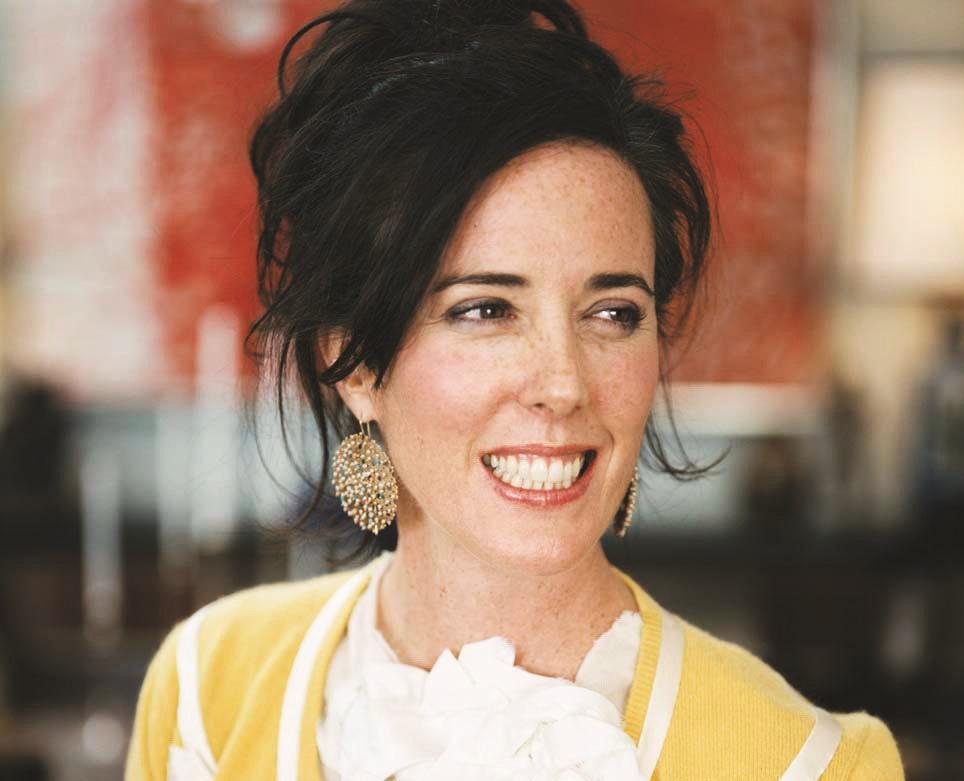

The couple launched a men's accessories line around this time too, and called it Jack Spade.

It was at this point that the brand decided to expand into items like journals, photo albums, and personal organizers the next year they introduced footwear. As per a Vanity Fair profile, the Spades built a "business by knowing what they don't want to be - too luxe, too hip, too retro, too fashionable, too fast."īy 1998, sales had ballooned to $27 million, and the Spades had opened their first stores in New York City, Los Angeles, and Japan. In a short period of time, the San Francisco Examiner noted in 2000, the Kate Spade logo had "joined the status signature company of Gucci's double-Gs, Chanel's double-Cs and Louis Vuitton's LVs." Sales jumped from $100,000 in 1993 to $1.5 million in 1995. "When two women met and saw they were both holding Kate Spade bags, they'd nod at each other and understand they were on the same page. "The purses became something of a handshake," says Wall Street Journal fashion reporter Christina Binkley. When two women met and saw they were both holding Kate Spade bags, they'd nod at each other." "The purses became something of a handshake. Suddenly industry insiders like Anna Wintour and Linda Wells were carrying Kate Spade bags, as were celebrities like Julia Roberts and Gwyneth Paltrow. Three months after a Vogue editor spotted Brosnahan's table at a trade show, the magazine featured Kate Spade in its pages, right next to Gucci, no less. The clean nylon bags - which came to include totes, messenger bags, and mini backpacks, and were described as "preppy-with-attitude" by the Washington Post - caught on fast. The pair hired Pamela Bell and Elyce Arons, two of Brosnahan's best friends, to help out with the new business and worked around the clock from their Tribeca loft. Andy, who didn't leave his advertising job for another five years, drained $35,000 from his savings account. A few months later, Bloomingdale's, Nordstrom, and Saks Fifth Avenue came knocking. Much to her delight, Barneys and Fred Segal placed orders, as did Charivari, the same boutique that kickstarted Marc Jacobs's career. The night before her first show, Brosnahan told Forbes, she spent hours moving her black labels with their white "Kate Spade New York" logos from the inside of the bags to the outside after the idea wouldn't stop nagging her. The duo evolved Brosnahan's samples into a collection of black nylon bags priced between $100 and $400 and took them to various trade shows around New York City. She produced a few more samples, all made of bright fabrics, and after brainstorming potential company names ("Olive" was a top contender), settled for "Kate Spade," a mash-up of her and Andy's names, although it would later become her own after the two married in 1994. Her first sample was a square bag mocked up in burlap (her supplier was a potato-sack manufacturer she found in the yellow pages) and woven with raffia fringe. Something "timeless" and "more personal, less serious," she told the Boston Globe in 1999 a bag that could "assume the personality of the wearer, not the reverse." Undaunted by her lack of design experience - and with the encouragement of her boyfriend Andy Spade, an advertising creative director she had met at Arizona State University - the then-30-year-old Brosnahan got to work with paper and Scotch tape, conceptualizing what in her mind would be the perfect handbag. Perhaps it was her Midwestern roots, but the Kansas City native preferred accessories that were both simple and fun.

In fact, for many years, her bag of choice was labelless and wicker. She wasn't interested in the stiff classics from Chanel and Prada, nor the staid brown and black leather options from Coach and Longchamp. With personal fashion icons like Katharine Hepburn, Jackie O., and Björk, she appreciated feminine bags with a playful touch. Once upon a time (1991, to be precise) in a land not that far away (New York City, actually), a senior fashion editor at Mademoiselle magazine named Kate Brosnahan decided she was bored with handbags.īrosnahan's style was "sassy but classy," as Cosmopolitan put it back in 2005.


 0 kommentar(er)
0 kommentar(er)
